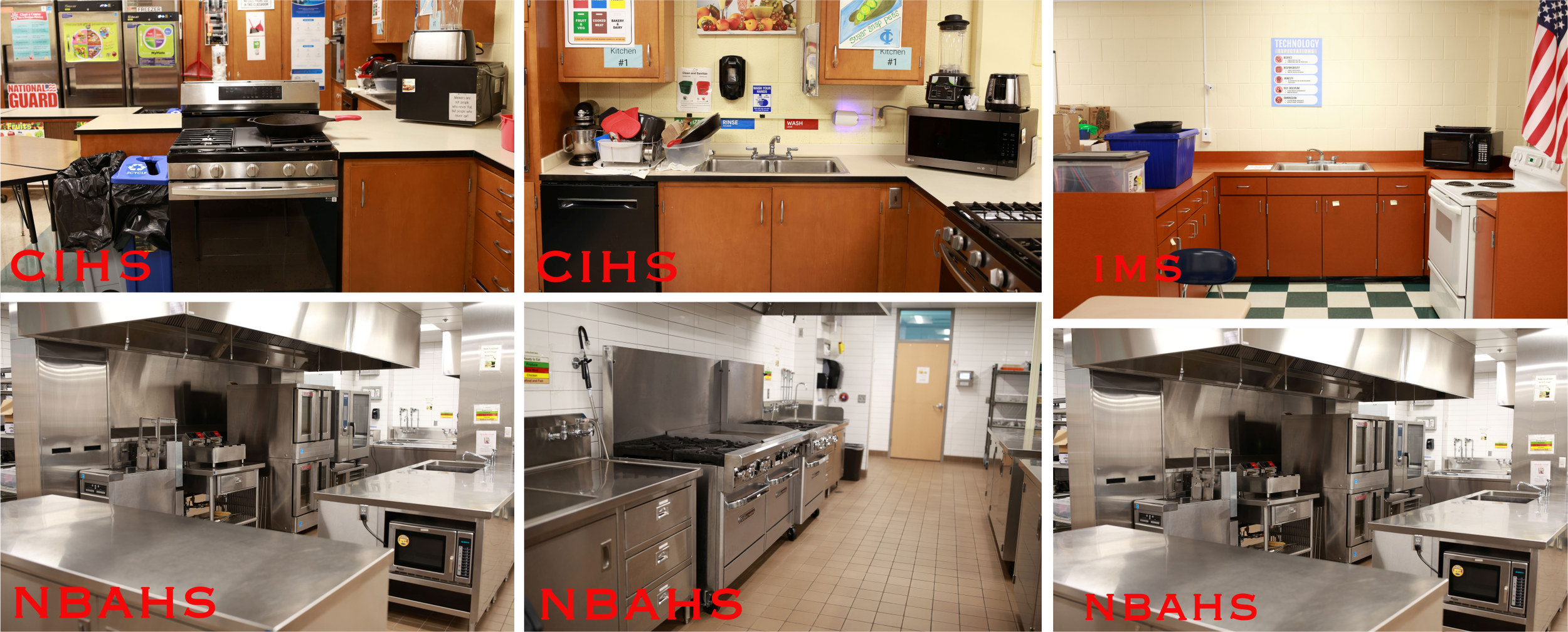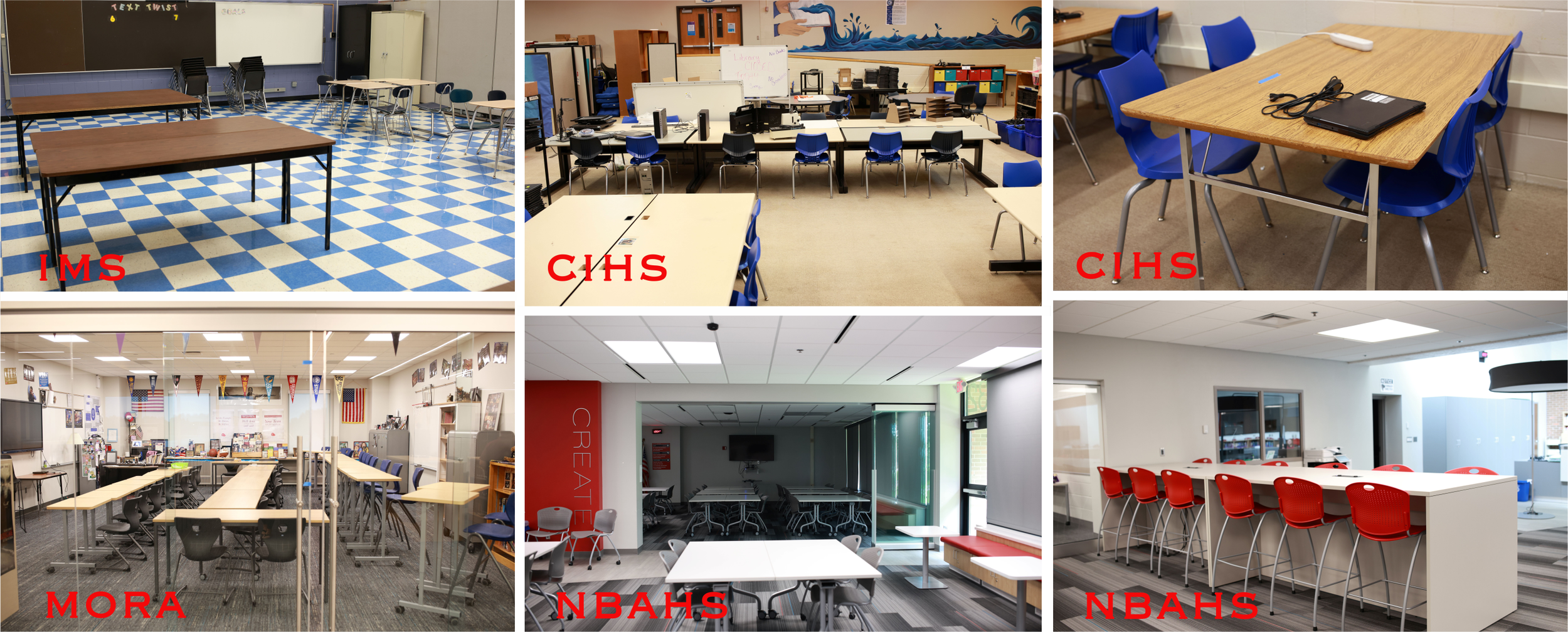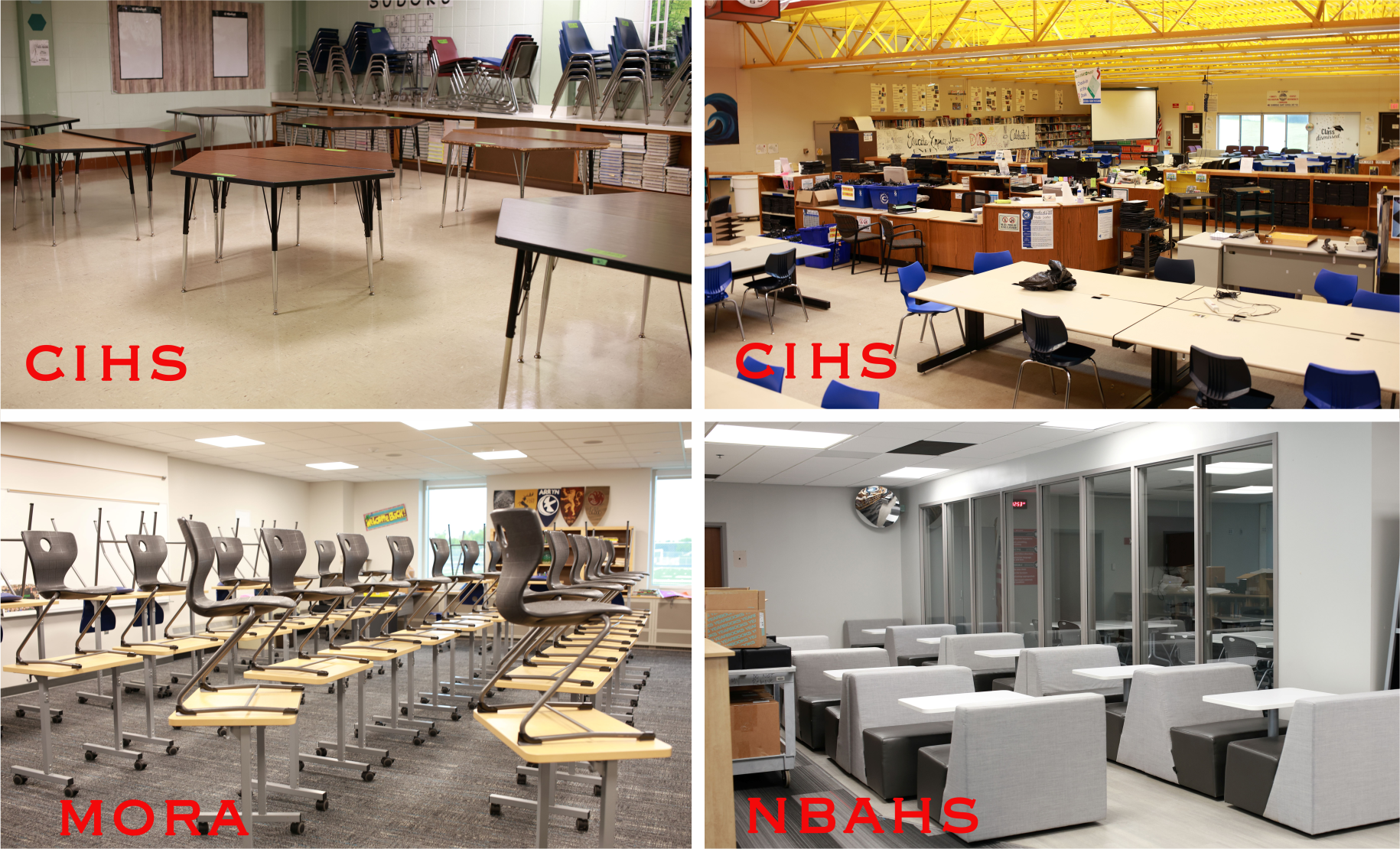
HOW ARE MODERN LEARNING ENVIRONMENTS DIFFERENT FROM TRADITIONAL CLASSROOMS?
Modern learning environments look and function differently than traditional classrooms—offering flexible, student-centered spaces that support collaboration, creativity, and real-world learning. Instead of fixed rows of desks, modern classrooms feature adaptable layouts, breakout areas for small group work, integrated technology, natural light, and furnishings that encourage movement and engagement. These spaces are designed to support a wide range of teaching approaches and learning styles—helping every Bluejacket feel connected, challenged, and ready to thrive.
Investing in these environments here at C-I is not just about aesthetics; it’s about giving our students and educators the tools and settings they need to succeed. Whether it’s project-based learning, career-focused labs, or collaborative problem-solving exercises — modern learning spaces help prepare Bluejackets for the future.
BELOW ARE SOME EXAMPLES OF CAMBRIDGE-ISANTI’S CURRENT LEARNING SPACES COMPARED TO MODERN LEARNING ENVIRONMENTS AT NEIGHBORING DISTRICTS:
Our Family and Consumer Science Lab is outdated compared to the real-world learning environments offered for Culinary Arts at neighboring districts like North Branch Area High School.
These classroom examples at North Branch and Mora Public Schools illustrate how adding glass, movable furniture, and breakout spaces in hallway would provide flexible learning spaces to support individual and group instruction, while allowing appropriate supervision across all learning areas.
Our Library/Media Center could be better utilized for breakout groups and individual work spaces as illustrated in this example from North Branch. Flexible furniture in classrooms, similar to the example from Mora Public Schools, would allow more movement in the classroom for collaborative and project-based learning.



